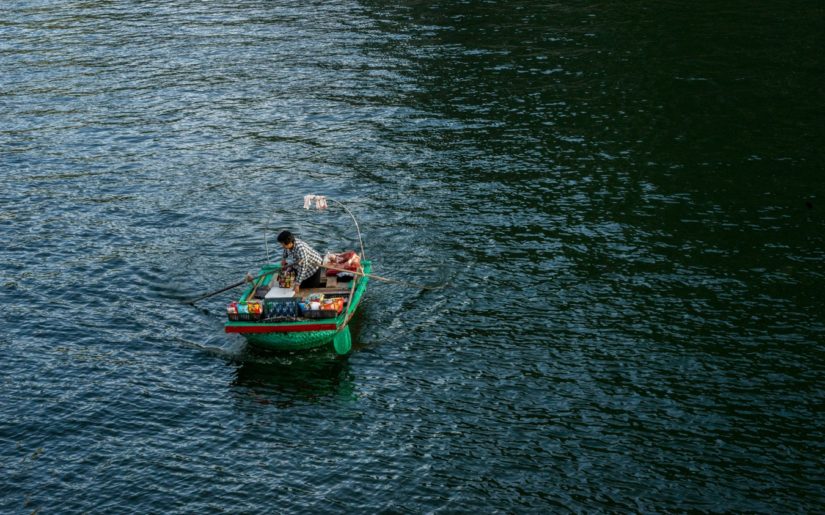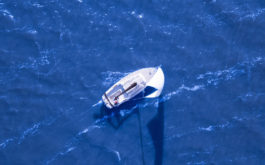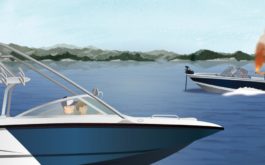Hull Leaks and Flooding
Striking underwater hazards such as a submerged rock, sunken island, shoal or deadhead may cause serious damage to your craft resulting in a breach of the hull. If the hull of your craft is breached, leaking and flooding will occur. Improper fitting of the craft’s drain plug or a worn or improperly installed exhaust/out-drive seal may also result in flooding.
If you witness water accumulating in the hull of your boat, immediately take the following actions:
Step 1) Determine whether the passengers and the vessel are in danger.
Step 2) If the craft is moving bring it to a complete stop (this will reduce water pressure against the hull and reduce the speed at which water is entering the boat). Turn on the bilge pump (if equipped) and identify the source of the leak or flooding.
Step 3) Stop the hull leak if possible. The use of tapered wooden plugs, a hull patch kit, towel, rag or other malleable material may work.
Step 4) Attempt to remove accumulations of water. You can remove water by using a hand-held bailer, manual pump or bilge pumping system. You should use a device that suits the circumstances and the type of craft (your craft should be equipped with appropriate bailing devices as stipulated by the Small Vessel Regulations.)
Step 5) If necessary, signal your need for help using a recognized distress signal.
Remember: You should always carry the tools and materials needed to temporarily stop hull leaks or flooding.
These include:
- Tapered wooden plugs
- Hull patch kit
- Towels, rags or other malleable material
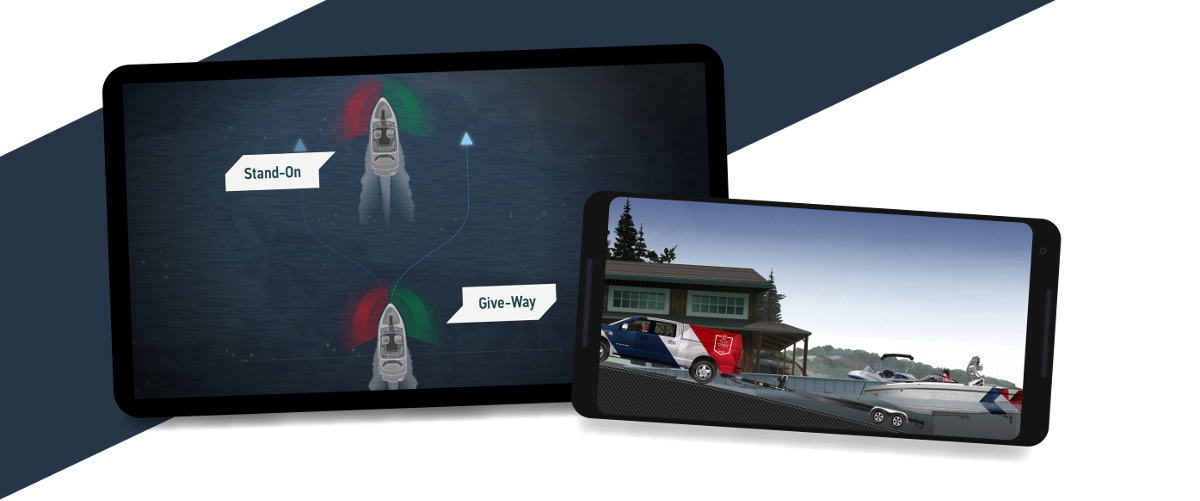
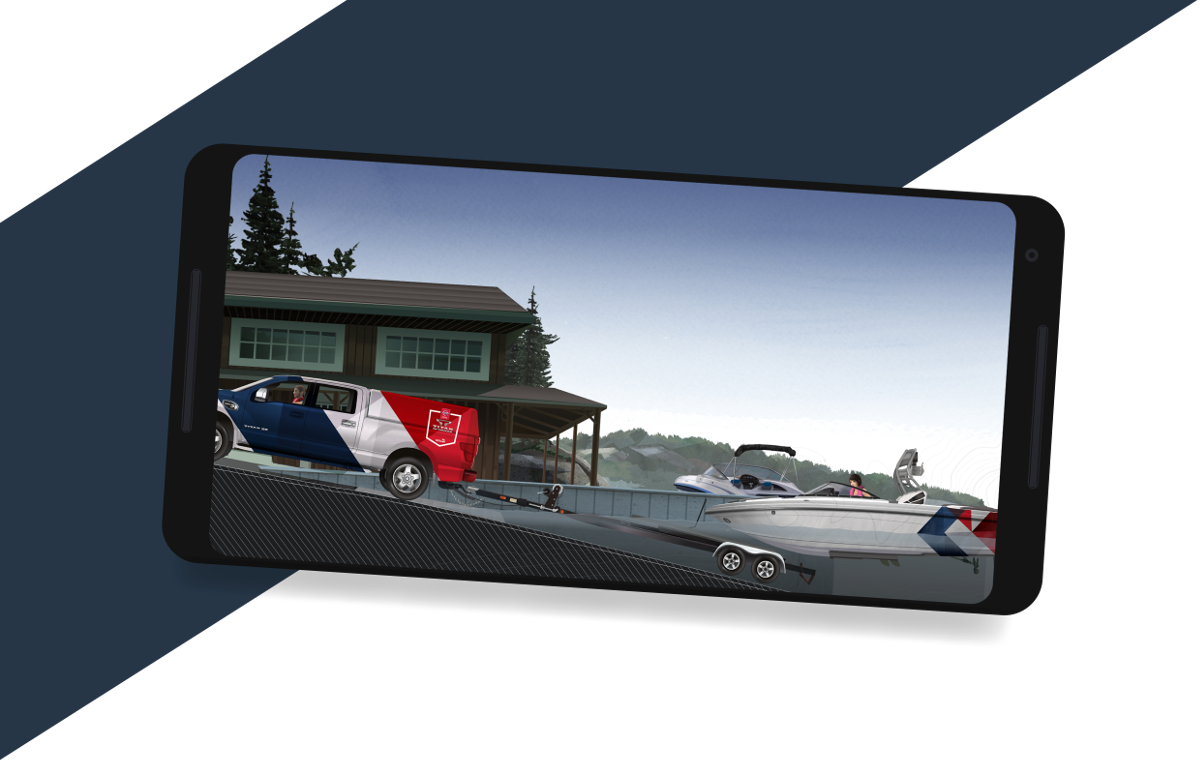
Get your Official North American
Boating License
The Official NASBLA and Transport Canada Boating Course, Test & License.
Get your Official North American
Boating License
The Official NASBLA and Transport Canada Boating
Course, Test & License.
Swamping and Sinking
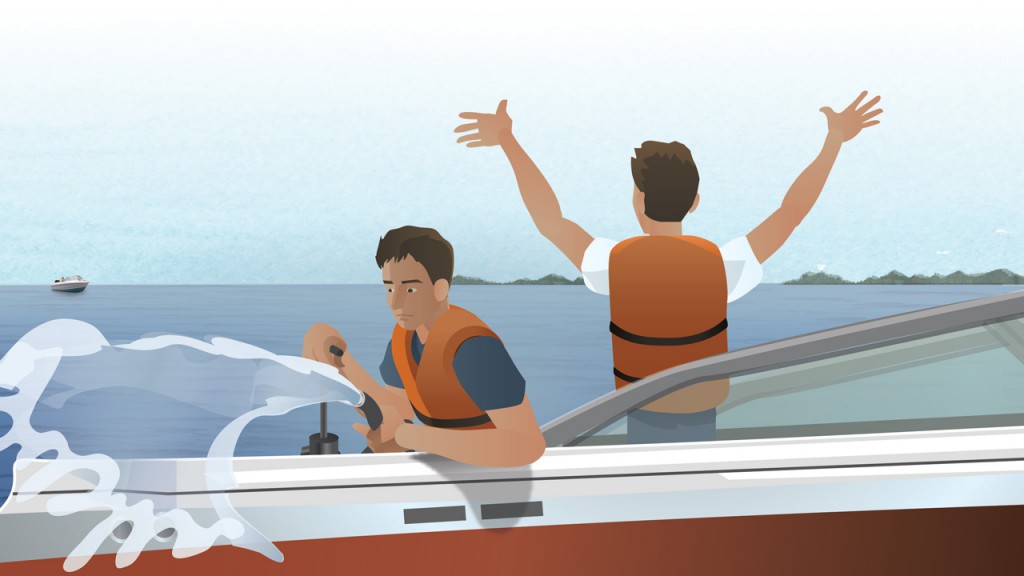
A boat is ‘swamped’ when it fills with water from over the side. Swamping can be caused by large waves coming over the gunwales or transom of your boat if it has been overloaded. If your boat has been swamped or is sinking, perform the following:
Step 1) Ensure that everyone is wearing a lifejacket or PFD.
Step 2) Visually and/or verbally confirm that all passengers are present and accounted for.
Step 3) Determine if there are other craft in the vicinity that may offer assistance.
Step 4) Determine if there is any danger of being hit by other boat traffic.
Step 5) Attempt to stop any hull leaks or flooding if possible.
Step 6) If you cannot stop your craft from sinking, immediately swim to safety.
Step 7) Signal your need for help using a recognized distress signal.
